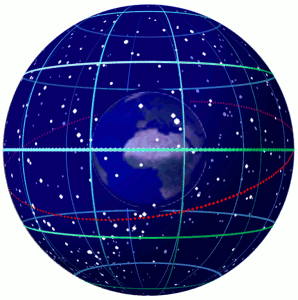|
Hemisphere
Hemisphere refers to: * A half of a sphere As half of the Earth * A hemisphere of Earth ** Northern Hemisphere ** Southern Hemisphere ** Eastern Hemisphere ** Western Hemisphere ** Land and water hemispheres * A half of the (geocentric) celestial sphere ** Northern celestial hemisphere ** Southern celestial hemisphere * A cultural hemisphere As half of the brain * A cerebral hemisphere, a division of the cerebrum * A half of the cerebellum, a smaller part of the brain Other * ''Hémisphère'' (Paradis), a 12-inch album by French artists Paradis * ''Hemispheres'' (magazine), an inflight publication * ''Hemispheres'' (TV series), Canadian and Australian news program * ''Hemispheres'' (Rush album), 1978 * ''Hemispheres'' (Lily Afshar album), 2006 * ''Hemispheres'' (Doseone album), 1998 * L'Hemisfèric at the Ciutat de les Arts i les Ciències, Valencia, Spain * Hemisphere Project, a counternarcotics program between United States federal and state drug officials and AT&T ... [...More Info...] [...Related Items...] OR: [Wikipedia] [Google] [Baidu] |
Cerebral Hemisphere
The vertebrate cerebrum (brain) is formed by two cerebral hemispheres that are separated by a groove, the longitudinal fissure. The brain can thus be described as being divided into left and right cerebral hemispheres. Each of these hemispheres has an outer layer of grey matter, the cerebral cortex, that is supported by an inner layer of white matter. In eutherian (placental) mammals, the hemispheres are linked by the corpus callosum, a very large bundle of nerve fibers. Smaller commissures, including the anterior commissure, the posterior commissure and the fornix, also join the hemispheres and these are also present in other vertebrates. These commissures transfer information between the two hemispheres to coordinate localized functions. There are three known poles of the cerebral hemispheres: the '' occipital pole'', the '' frontal pole'', and the '' temporal pole''. The central sulcus is a prominent fissure which separates the parietal lobe from the frontal lobe and ... [...More Info...] [...Related Items...] OR: [Wikipedia] [Google] [Baidu] |
Land And Water Hemispheres
The land hemisphere and water hemisphere are the hemispheres of Earth containing the largest possible total areas of land and ocean, respectively. By definition (assuming that the entire surface can be classed as either "land" or "ocean"), the two hemispheres do not overlap. Determinations of the hemispheres vary slightly. One determination places the centre of the land hemisphere at (in the city of Nantes, France). The centre of the water hemisphere is the antipode of the centre of the land hemisphere, and is therefore located at (near New Zealand's Bounty Islands in the Pacific Ocean). An alternative assignment determines the centre of the land hemisphere to be at (in near Piriac-sur-Mer, France). The centre of the water hemisphere is located at (also near New Zealand's Bounty Islands in the Pacific Ocean). In comparison the geographic center of the Pacific Ocean, the main ocean of the water hemisphere, is further north-east, in eastern Kiribati south of Kiritimati, just ... [...More Info...] [...Related Items...] OR: [Wikipedia] [Google] [Baidu] |
Hemispheres Of Earth
Hemispheres of Earth in geography and cartography, are any division of the globe into two hemispheres (). Geographical Hemispheres The primary hemispherical split geographically is made by latitudinal (north/south) and longitudinal (east-west) markers: * North–South ** Northern Hemisphere, the half that lies north of the Equator ** Southern Hemisphere, the half that lies south of the Equator * East–West ** Eastern Hemisphere, the half that lies east of the prime meridian and west of the 180th meridian ** Western Hemisphere, the half that lies west of the prime meridian and east of the 180th meridian Alternative Hemispheres The East–West division can also be seen in a cultural and religious sense, as a division into two cultural and religious hemispheres. Some geographers prefer to split the hemispheres at 20° west and 160° east so that Africa and Europe are not split. However, other schemes have sought to divide the planet in a way that maximizes the prep ... [...More Info...] [...Related Items...] OR: [Wikipedia] [Google] [Baidu] |
Hemispheres (Rush Album)
''Hemispheres'' is the sixth studio album by Canadian rock band Rush, released in October 1978 by Anthem Records. After touring to support the band's previous release, '' A Farewell to Kings'', during which the group gained popularity in the UK, Rush started work on their next album. As with the band's previous studio album, ''Hemispheres'' was recorded at Rockfield Studios in Monmouthshire and Trident Studios in London with longtime engineer and arranger, Terry Brown. Rush continued its progressive rock sound with the side-long " Cygnus X-1 Book II: Hemispheres" and the nine-minute instrumental "La Villa Strangiato". ''Hemispheres'' received acclaim from music critics. It reached number 14 in Canada and the UK, and number 41 in the United States. The album's two shorter tracks, " Circumstances" and " The Trees" were released as singles in early 1979. In 1993, the album was certified platinum by the Recording Industry Association of America (RIAA) for selling one million cop ... [...More Info...] [...Related Items...] OR: [Wikipedia] [Google] [Baidu] |
Western Hemisphere
The Western Hemisphere is the half of the planet Earth that lies west of the prime meridian (which crosses Greenwich, London, United Kingdom) and east of the antimeridian. The other half is called the Eastern Hemisphere. Politically, the term Western Hemisphere is often used as a metonymy for the Americas, even though geographically the hemisphere also includes parts of other continents. Fulbright Program. Geography The Western Hemisphere consists of the , excluding some of the[...More Info...] [...Related Items...] OR: [Wikipedia] [Google] [Baidu] |
Northern Hemisphere
The Northern Hemisphere is the half of Earth that is north of the Equator. For other planets in the Solar System, north is defined as being in the same celestial hemisphere relative to the invariable plane of the solar system as Earth's North Pole. Owing to Earth's axial tilt of 23.439281°, winter Winter is the coldest season of the year in Polar regions of Earth, polar and temperate climates. It occurs after autumn and before spring (season), spring. The tilt of Axial tilt#Earth, Earth's axis causes seasons; winter occurs when a Hemi ... in the Northern Hemisphere lasts from the December solstice (typically December 21 UTC) to the March equinox (typically March 20 UTC), while summer lasts from the June solstice through to the September equinox (typically on 23 September UTC). The dates vary each year due to the difference between the calendar year and the Year#Astronomical years, astronomical year. Within the Northern Hemisphere, oceanic currents can change the ... [...More Info...] [...Related Items...] OR: [Wikipedia] [Google] [Baidu] |
Southern Celestial Hemisphere
The southern celestial hemisphere, also called the Southern Sky, is the southern half of the celestial sphere; that is, it lies south of the celestial equator. This arbitrary sphere, on which seemingly fixed stars form constellations, appears to rotate westward around a polar axis due to Earth's rotation. At any given time, the entire Southern Sky is visible from the geographic South Pole, while less of this hemisphere is visible the further north the observer is located. The northern counterpart is the northern celestial hemisphere. Astronomy In the context of astronomical discussions or writing about celestial mapping, it may also simply then be referred to as the Southern Hemisphere. For the purpose of celestial mapping, the sky is considered by astronomers as the inside of a sphere divided in two halves by the celestial equator. The Southern Sky or Southern Hemisphere is, therefore, that half of the celestial sphere that is south of the celestial equator. Even if ... [...More Info...] [...Related Items...] OR: [Wikipedia] [Google] [Baidu] |
Cerebellum
The cerebellum (Latin for "little brain") is a major feature of the hindbrain of all vertebrates. Although usually smaller than the cerebrum, in some animals such as the mormyrid fishes it may be as large as or even larger. In humans, the cerebellum plays an important role in motor control. It may also be involved in some cognitive functions such as attention and language as well as emotional control such as regulating fear and pleasure responses, but its movement-related functions are the most solidly established. The human cerebellum does not initiate movement, but contributes to coordination, precision, and accurate timing: it receives input from sensory systems of the spinal cord and from other parts of the brain, and integrates these inputs to fine-tune motor activity. Cerebellar damage produces disorders in fine movement, equilibrium, posture, and motor learning in humans. Anatomically, the human cerebellum has the appearance of a separate structure attached to th ... [...More Info...] [...Related Items...] OR: [Wikipedia] [Google] [Baidu] |
Hemispheres (magazine)
''Hemispheres'' is United Airlines' inflight magazines. The magazine is circulated monthly and reaches 139 million passengers annually. The magazine was formerly produced in Greensboro, North Carolina. It is currently produced in New York City New York, often called New York City or NYC, is the most populous city in the United States. With a 2020 population of 8,804,190 distributed over , New York City is also the most densely populated major city in the U .... ''Hemispheres'' was established in 1992. Its editorial coverage includes its signature ‘3 Perfect Days’ travel piece, and the latest news in business, travel, fashion, and culture. The magazine reaches a highly influential business and leisure traveller audience, with a median household income of $128,000, spending and profession. In 2009, Ink was appointed as the new publisher for United ''Hemispheres''. Ink's first issue of ''Hemispheres'' was placed on all United Airlines and Uni ... [...More Info...] [...Related Items...] OR: [Wikipedia] [Google] [Baidu] |
Sphere
A sphere () is a Geometry, geometrical object that is a solid geometry, three-dimensional analogue to a two-dimensional circle. A sphere is the Locus (mathematics), set of points that are all at the same distance from a given point in three-dimensional space.. That given point is the centre (geometry), centre of the sphere, and is the sphere's radius. The earliest known mentions of spheres appear in the work of the Greek mathematics, ancient Greek mathematicians. The sphere is a fundamental object in many fields of mathematics. Spheres and nearly-spherical shapes also appear in nature and industry. Bubble (physics), Bubbles such as soap bubbles take a spherical shape in equilibrium. spherical Earth, The Earth is often approximated as a sphere in geography, and the celestial sphere is an important concept in astronomy. Manufactured items including pressure vessels and most curved mirrors and lenses are based on spheres. Spheres rolling, roll smoothly in any direction, so mos ... [...More Info...] [...Related Items...] OR: [Wikipedia] [Google] [Baidu] |
Celestial Sphere
In astronomy and navigation, the celestial sphere is an abstract sphere that has an arbitrarily large radius and is concentric to Earth. All objects in the sky can be conceived as being projected upon the inner surface of the celestial sphere, which may be centered on Earth or the observer. If centered on the observer, half of the sphere would resemble a hemispherical screen over the observing location. The celestial sphere is a conceptual tool used in spherical astronomy to specify the position of an object in the sky without consideration of its linear distance from the observer. The celestial equator divides the celestial sphere into northern and southern hemispheres. Introduction Because astronomical objects are at such remote distances, casual observation of the sky offers no information on their actual distances. All celestial objects seem equally far away, as if fixed onto the inside of a sphere with a large but unknown radius, which appears to rotate west ... [...More Info...] [...Related Items...] OR: [Wikipedia] [Google] [Baidu] |
Eastern Hemisphere
The Eastern Hemisphere is the half of the planet Earth which is east of the prime meridian (which crosses Greenwich, London, United Kingdom) and west of the antimeridian (which crosses the Pacific Ocean and relatively little land from pole to pole). It is also used to refer to Afro-Eurasia (Africa and Eurasia) and Australia, in contrast with the Western Hemisphere, which includes mainly North and South America. The Eastern Hemisphere may also be called the "Oriental Hemisphere", and may in addition be used in a cultural or geopolitical sense as a synonym for the "Old World." Geography The almost perfect circle (the earth is an oblate that is fatter around the equator), drawn with a line, demarcating the Eastern and Western Hemispheres must be an arbitrarily decided and published convention, unlike the Equator (an imaginary line encircling Earth, equidistant from its poles), which divides the Northern and Southern Hemispheres. The prime meridian at 0° longitude and the ... [...More Info...] [...Related Items...] OR: [Wikipedia] [Google] [Baidu] |
_-_inferiror_view.png)





